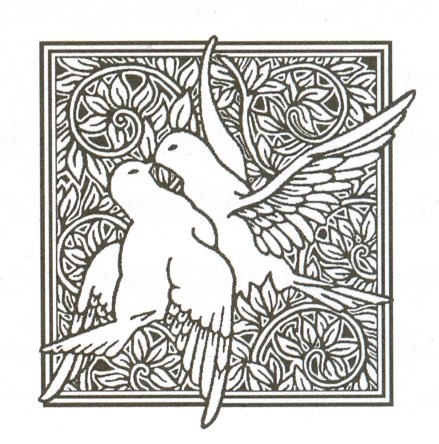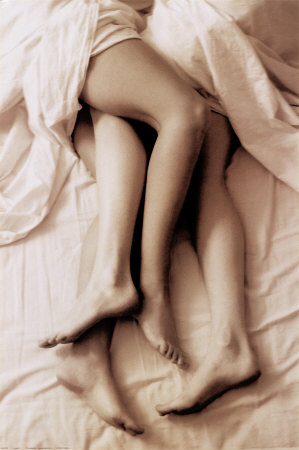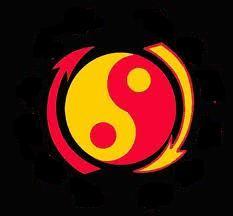|
Word Gems
exploring self-realization, sacred personhood, and full humanity
Robert Joyce
and
William May
return to previous page
Robert Joyce's giving in a receiving way, receiving in a giving way; a prosaic explanation of male-female romantic love, so beautiful that it reads like poetry
|
Robert Joyce: I would define a man as a human being who both gives in a receiving way and receives in a giving way, but is so structured in his being that he is emphatically inclined toward giving in a receiving way.

The nature of being a man is an emphasis on giving in a receiving way. A woman is a human being who both gives in a receiving way and receives in a giving way, but is so structured in her being that she is emphatically inclined toward receiving in a giving way.
The nature of being a woman is an emphasis on receiving in a giving way … The sexuality of man and woman … is oriented in opposite but very complementary ways.
|

|
William E. May: [In romantic love, the man and woman] "give" themselves to one other and "receive" one another. Yet they do so in strikingly different [but] complementary ways, for it is an act made possible precisely by reason of their sexual differences. The [woman] does not have a penis; therefore ... she cannot enter the body, the person, [of the man], whereas ... he [does] enter into her body-person.
On the other hand, she is uniquely capable of receiving [him] into her body, her self, and in so doing she gives herself to him. [This] receiving ... in a giving sort of way is just as essential to the unique meaning of [sexual love] as [his] giving of himself in a receiving sort of way. [He] cannot ... give himself ... unless she gives herself to him by receiving him, nor can she receive him ... unless he gives himself to her in this receiving way.

[As] Robert Joyce says, "the man does not force himself upon the woman, but gives himself in a receiving manner. The woman does not simply submit herself to the man, but receives him in a giving manner." Note that ... [he] is not active and [she] passive. Each is active, but is active in differing and complementary ways...
Man and woman … are two differing and complementary ways of imaging [God, who] is both the superabundant giver of good gifts and the One who is ever within us, who is with us and for us, and who longs to welcome us and give our hearts refreshment and peace. [God] is, as the beautiful hymn of Henry Van Dyck expresses it, both the ‘Wellspring of the joy of living’ and the ‘Ocean depth of happy rest.’

Both man and woman are to image God in [a] superabundant goodness and [a] peaceful immanence … as the ‘Wellspring of the joy of living’ and the ‘Ocean depth of happy rest.’ But the man, in imaging God, emphasizes [a] transcendent, superabundant goodness … the ‘Wellspring of the joy of living,’ while the woman, in imaging God, emphasizes [God’s] immanence [a quality of ‘withinness’] … the ‘Ocean depth of happy rest.’ The man, like the woman, is summoned to receive as well as to give, to be an ‘Ocean depth of happy rest’ as well as a ‘Wellspring of the joy of living’; the woman [presents the mirror opposite].
Since this is so, it is reasonable to hold that within every human person, male and female, there is the ‘masculine’ (the emphasis on giving in a receiving way … a ‘Wellspring of the joy of living’) and the feminine (the emphasis on receiving in a giving way … an ‘Ocean depth of happy rest’) …
Precisely because the woman’s sexuality emphasizes the withinness, the abidingness, the sameness of being, and because the man’s sexuality emphasizes the outgoingness, the expansiveness, the otherness of being, a woman’s sexual identity is more interior, intimately linked to her being, her bodiliness, whereas a man’s sexual identity is more exterior, intimately associated with his activity [in the world].
It is for this reason … that a woman more easily comes to a realization of what it means to be feminine … than a man does in coming to realize what it means to be masculine … The man needs, as it were, to go out of himself and prove himself in the world.
- Editor's note: The phrase, "more easily comes to a realization," is another way of saying that she more easily awakens to her own spirituality; as such, and as ancient cultures teach, she is designed to be the senior partner regarding their One-Person development.

|
Editor’s note: There are those who believe – they say, expressing a Biblical view – that man, by right, is to be the active and dominant one; woman, almost an afterthought, effectively, with no real identity, is characterized as passive and submissive. But as we proceed beyond superficial and literalistic interpretations of the Adam and Eve story, we find a vastly different meaning - one of divine egalitarianism; some, for a long time, have profited by keeping this equality out of sight.
We find that there is something of the feminine in the male; of the masculine in the female. In a sense, they are not so different. Within their deepest persons, both express the same attributes of God, albeit in varying degrees. This Mystery of Being is symbolically represented in the ancient yin-yang symbol and their small circles of opposite color within the larger halves: male and female, each retaining something of the other.
My own sense is that now, “in the fullness of time,” humanity has gained enough collective enlightenment to begin to reject the centuries-old dark teachings of the churchmen and to finally move forward into a better view.
|






